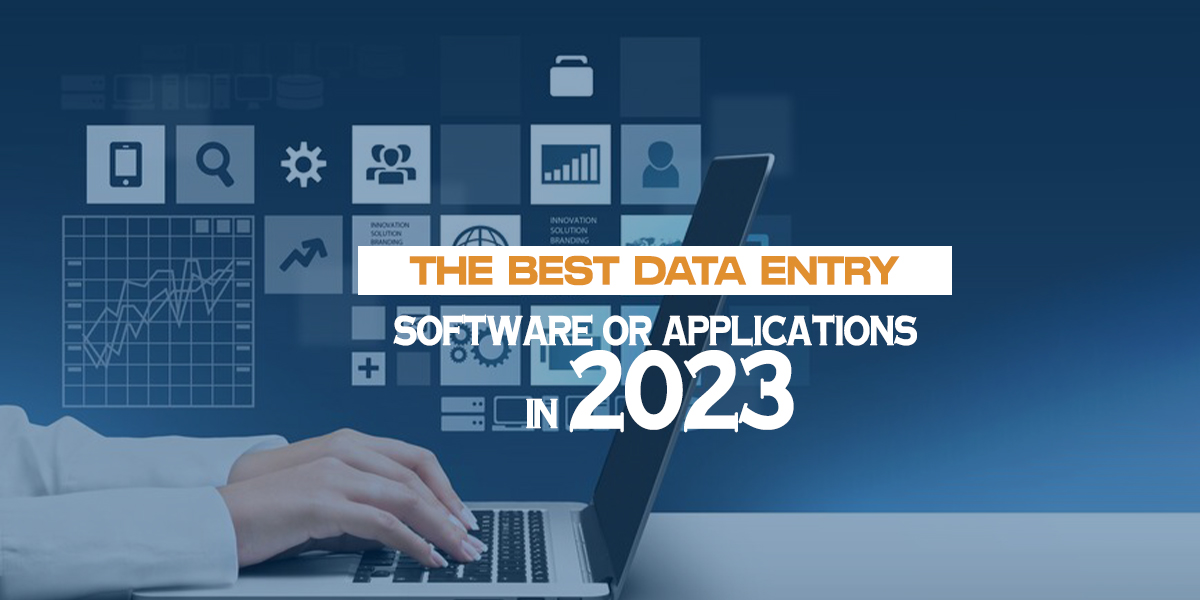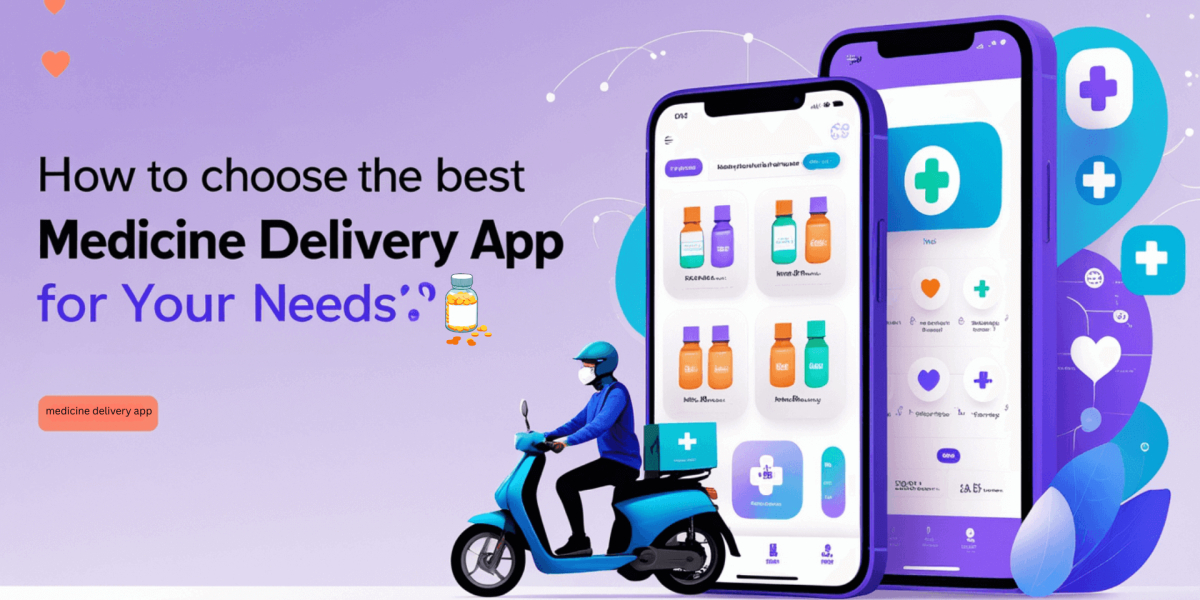The Best Data Entry Software or Applications in 2023
- By Emily Bailey
- 04-11-2023
- Software

The entire corporate world is changing. It’s embracing digitization, which is used for digitalization of various back-office processes, such as inventory management system, accounting, and more. This evolution is indicating that it’s a high time to shift to fast processes of data entry without making any errors. Since AI and AGI are also here, it has become more important to embrace such enhanced data entry tools in 2023 that are efficient, accurate, and user-friendly in inputting, scraping, or collecting data.
This blog shares such software or applications with their features and capabilities that can make data inputting way easier than ever. So, here come the detail along with the names of the best one for your business.
1. Nintex RPA
RPA stands for Robotic Processing Automation. Nintex RPA is a tool that is powered by RPA technology. It’s like a machine deburdening the human task of inputting data. It’s absolutely effortless to streamline data entries without taking too much time. This is because of its drag-n-drop interface. It means that you can drag and drop to automatically capture data from different sources or databases. This robotic processing ensures that the input data is accurate and consistently entered. All of these features make it a standout software for data entry in 2023.
2. UiPath
UiPath is the second one in the lane. It is also powered by robotic process automation (RPA) technology. This technology is effective and matchless when it comes to inputting data entry. It always make entries with precision and lightning-fast speed. Also, there is cognitive automation. This technology pushes artificial intelligence to sail across complex data structure problem without any effort. It comes up with an extensive library, wherein users can access reusable options for pre-built activities. All of these features make it unique, and with machine learning capabilities, it marks the top position as a data entry powerhouse.
3. Scan Writer
Scan Writer is a data conversion tool, which converts a PDF or image document into digitized revolutionizes data entry by seamlessly converting handwritten documents into digital formats. Its optical character recognition (OCR) technology breaks all barriers that users face while dealing with image data. It ensures data accuracy while significantly reducing manual input. A true game-changer for digitizing legacy records.
4. Zoho Forms
Zoho Forms are extremely popular for empowering users to create customizable and mobile-responsive forms effortlessly. Users can use it for surveying and placing orders. Its intuitive interface is amazing, which an individual can easily use to capture data. These are adaptable, which means that one can integrate them with other Zoho applications, such as Zoho People, so that the data flow can be automated in real-time for different purposes. Also, it helps in catching up with insights through data analytics.
5. Fluix
This is an incredible tool for the offsite researchers, or primary researchers. Fluix redefines the way you input data using your mobile phone. It is infused with offline capabilities that allow field workers or researchers or surveyors to capture data in remote locations from primary resources. It’s, indeed, a luxury because the value of firsthand data is matchless. It has genuine details from end-users. Besides, this tool allows real-time syncing, which removes any delays or barriers in integrating data. Once input, the digitized details can enter into automated workflows, which allows seamless data processing. It means that you can access an effortless tool that is useful from entry to analysis.
6. FoxTrot
This is amazing when you need support in extracting data entries for pooling relevant and relational data together. FoxTrot's intelligent data extraction technology not only extracts, but also validates data from diverse sources. There is another reason to keep this data entry application in the list of top data entry software or applications of 2023, which is adaptability. Simply put, one can easily change document layouts and formats in accordance with requirements, which makes it a versatile solution for data entry and integration.
7. Typeform
Typeform is actually for conversational form data entry. It allows users to elevate data entry experience by engaging with these highly interactive forms. Their comprehensive and communicational designs enhance user experience. Simultaneously, one can collect valuable information. Once collated, the integrated data becomes digitized and hence, it can be transferred to various platforms or incorporated systems.
8. Infinity
This is again the best fit example of tools to make data entries in a database. Infinity follows a flexible database approach, which enables users to structure and organize data in accordance with requirements (which may soar or go down over time). Its tailor-made layouts or templates together with automation build an experience for efficient data entry and management. In essence, it is a dynamic solution for diverse industries.
9. Zed Axis
This is a unique data entry software that specializes in seamless accounting data entry. Zed Axis simplifies data inputting by flawlessly integrating databases with various accounting software. It means that importing and exporting data while maintaining accuracy and consistency is like a walkover with it. In the nutshell, it would be appropriate to call it an ideal tool for financial and operational data entry, processing, and management.
10. Tabidoo
Tabidoo is a cloud-based data entry platform that is versatile in data entry and management. You can customize applications and also define workflows to streamline processes as your company requires. This is how you can have premium quality data with accuracy and accessibility (on the cloud). Its remote accessibility is outstandingly useful when you want real-time collaboration of data entries to enhance team efficiency.
AI-Grooper
This represents an advanced neural network that employs cutting-edge human-like data processing (neural network) technology. Its tools and elements can help you to recognize and categorize unstructured data in a fragment of time, enabling accurate data extraction from different databases or sources. It has semantic understanding that goes beyond keyword-based data extraction. This means that you can input data and reach out to complementing data for scraping. This ensures accurate data capture even if you have contextually complex documents. This is equipped with cognitive indexing. It automatically creates a cognitive index. With it, one can easily and efficiently retrieve N number of details from the target databases. This happens because of its next-level search capabilities across vast document repositories.
DocParser
Another data entry software that is one of the best is DocParser. It does not have any template for parsing data entries. Once seamlessly parsed, the data scientists or experts can utilize its standout feature, which lies in its ability to scrape any piece of information from a database without needing any predefined templates. This is why it is recognized as a versatile tool for various document types and layouts. In addition, users can come up with custom parsing requirements. It allows them because of its inbuilt features or components that are flexible-enough to seamlessly integrate data into specific databases (which may be associated with different processes). Besides, DocParser automatically works. Simply put, it is able to send extracted data to other software or databases automatically, streamlining data flow.
Klippa
Klippa is a multilingual OCR tool, which is obviously used for converting image documents into digitized data files.Its OCR engine supports multiple languages, which is valuable for offshore businesses. In simple words, it allows accessing, copying and pasting data from documents in diverse languages accurately. Its real-time verification is a unique feature. With it, one can easily deal with inaccurate data. This is possible because of its feature called cross-referencing. It means that you can cross-refer the extracted information with external databases or sources. There is another extraordinary feature, which is its capability to capture documents on the go and take away that datasets. The businesses that run remote and field-based operations find it convenient to use for inputting data.
Docsumo
The very first feature that fascinates users is data validation. Docsumo's AI not only assists in extracting datasets, but also validating its accuracy. This automatically happens because of its inbuilt pattern recognition and cross-field validation techniques. The next feature of this data entry application is its intelligent learning. This software quickly learns through corrections that users do. It continuously taps those corrections to automatically draw and train its models for improving its extraction potential with accuracy. This reduces or minimizes manual intervention. Additionally, this tool also gets gelled up with various software and databases. This associated flow of data breathes life into the workflow across multiple platforms.
Nanonets
Customization Capabilities: Nanonets empowers users to train and customize their own OCR models, optimizing extraction accuracy for specific document types.
Data Annotation: Its annotation tool facilitates efficient training data creation, enabling users to fine-tune the OCR engine for impeccable extraction results.
API for Automation: Nanonets offers an API that allows developers to integrate its OCR capabilities into existing workflows, automating data extraction processes.
Docupilot
Docupilot makes document generation a piece of cake. Like aforesaid tools, it also excels in data extraction. It means that you can input requisite data from target databases for generating a document. To simplify and make it laser-fast, Docupilot also automatically creates templates and documents with the help of extracted datasets. You may also apply conditional logic to templates. This makes dynamic document creation as smooth as a cakewalk. This is possible because of extracted data or user inputs. Another advantageous feature of this software is its intuitive interface. Docupilot has an extremely user-friendly interface. This is so because it simplifies the process of structuring document templates and setting up data extraction rules. On that basis, you can tailor-made a document by inputting data of your choice.
Document AI
This data entry tool is backed by Google's AI or Artificial Intelligence. Document AI comes with high-quality optical character recognition features. It automates data entry upon extraction, and also continues to get better by using advanced research feature. Its AI-powered understanding supports structuring and content management, which helps in reaching out to the relevant data points, extracting accurate datasets, and transitioning to the defined database. Also, Document AI faces no challenges in seamlessly integrating with Google Cloud and other platforms. This makes it suitable or the best fit for various industries and use cases.
Lucy
Lucy is a versatile data entry software, which is worldwide popular for its user-friendly interface and powerful features. With these, streamline and optimizing data management and processing become easier. It is capable of recognizing data from image files like PDF via its advanced Optical Character Recognition (OCR) technology. With it, one can automatically convert scanned documents, images, and PDFs into editable and searchable content or text files. If you use it, there is no need to manually input data from paper documents, which enhances accuracy and efficiency. You can find smart forms in it, which are the best alternative to create customized data entries. Also, you can apply conditional logic and validation rules because it has a scope to do so. This ensures no typos, as the data is accurately entered while matching the predefined criteria. Lucy exclusively offers real-time data validation, which means automatic flagging of inconsistencies or errors if users input information. This prevents incorrect or incomplete data from being input. This is how you can maintain the integrity of the database. Apart from these, it comes up with auto-fill and suggestions. The software intelligently recommends data entries based on historical data. It reduces manual typing and other concerns related to the input process. These features enhance productivity and reduce the burden of repetitive tasks. Also, you can seamlessly integrate data with external databases, APIs, and applications via Lucy. It automatically imports and exports datasets, which prevents you from inputting extra effort into updating databases and synchronizing them across platforms.
Conclusion
All of the aforementioned names represent the best data entry software or applications that are likely to be household names. They are already extremely popular for being driven by automation and digital data. This is no fantasy, but a reality that laser-fast data entry is possible with these tools, which make them the most popular data inputting tools of 2023.


.jpg)
.jpg)

